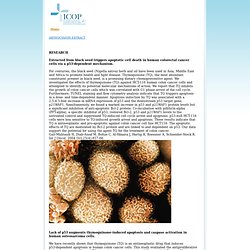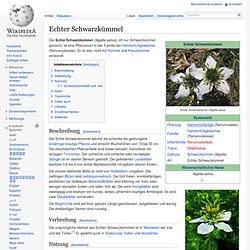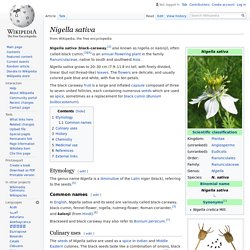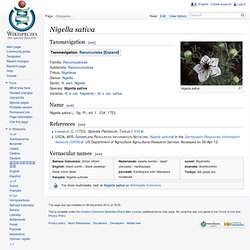

ICOP COP11. Extracted from black seed triggers apoptotic cell death in human colorectal cancer cells via a p53-dependent mechanism.

For centuries, the black seed (Nigella sativa) herb and oil have been used in Asia, Middle East and Africa to promote health and fight disease. Thymoquinone (TQ), the most abundant constituent present in black seed, is a promising dietary chemopreventive agent. We investigated the effects of thymoquinone (TQ) against HCT-116 human colon cancer cells and attempted to identify its potential molecular mechanisms of action. We report that TQ inhibits the growth of colon cancer cells which was correlated with G1 phase arrest of the cell cycle. Furthermore, TUNEL staining and flow cytometry analysis indicate that TQ triggers apoptosis in a dose- and time-dependent manner. Lack of p53 augments thymoquinone-induced apoptosis and caspase activation in human osteosarcoma cells.
Thymoquinone: a promising anti-cancer drug from natural sources. Is thymoquinone an antioxidant? Echter Schwarzkümmel. Beschreibung[Bearbeiten] Blüte von der Seite Die einzeln stehende Blüte ist nicht von Hüllblättern umgeben.

Die zwittrigen Blüten sind radiärsymmetrisch. Die fünf freien, kronblattartigen, weißlichen bis hellblauen Blütenhüllblätter sind eiförmig mit mehr oder weniger stumpfen Enden und fallen früh ab. Die zehn Honigblätter sind zweilappig und besitzen ein kurzes, dickes, pfriemlich-kopfiges Anhängsel. Die Balgfrüchte sind auf ihrer ganzen Länge geschlossen, aufgeblasen und warzig. Verbreitung[Bearbeiten] Die ursprüngliche Heimat des Echten Schwarzkümmels ist in Westasien der Irak und die Türkei.[1] Er gedeiht auch in Südeuropa, Indien und Nordafrika. Samen des Echten Schwarzkümmels Nutzung[Bearbeiten] Bereits seit mehr als 2.000 Jahren wird Schwarzkümmel im Orient als pfefferartiges Gewürz und Medizin verwendet. Schwarzkümmelöl und -tee[Bearbeiten] Islam[Bearbeiten] „Schwarzkümmel heilt jede Krankheit – außer den Tod“ Nigella sativa. Nigella sativa (black-caraway,[2] also known as nigella or kalonji), often called black cumin,[3][4] is an annual flowering plant in the family Ranunculaceae, native to south and southwest Asia.

Nigella sativa grows to 20–30 cm (7.9–11.8 in) tall, with finely divided, linear (but not thread-like) leaves. The flowers are delicate, and usually colored pale blue and white, with five to ten petals. Etymology[edit] The genus name Nigella is a diminutive of the Latin niger (black), referring to the seeds.[5] Common names[edit] In English, Nigella sativa and its seed are variously called black-caraway, black-cumin, fennel-flower, nigella, nutmeg-flower, Roman-coriander,[3] and kalonji (from Hindi).[6] Blackseed and black caraway may also refer to Bunium persicum.[7] Culinary uses[edit] The seeds of Nigella sativa are used as a spice in Indian and Middle Eastern cuisines.
The dry-roasted nigella seeds flavor curries, vegetables and pulses. History[edit] Nigella sativa. Nigella sativa [edit] Familia: Ranunculaceae Subfamilia: Ranunculoideae Tribus: Nigelleae Genus: Nigella Sectio: N. sect.

Nigella Species: Nigella sativa Varietas: N. s. var. hispidula – N. s. var. sativa Name[edit] Nigella sativa L., Sp. References[edit] Linnaeus, C. (1753). Vernacular names[edit] Bahasa Indonesia: Jintan HitamEnglish: black cumin / black caraway / black onion seedfrançais: Nigelle cultivéeNederlands: zwarte komijn / zwart uienzaad / narduszaadрусский: Калинджи или Чернушка посевнаяsuomi: Ryytineitosvenska: SvartkumminTürkçe: Adi çörek otu. Nigella sativa (Black cumin)